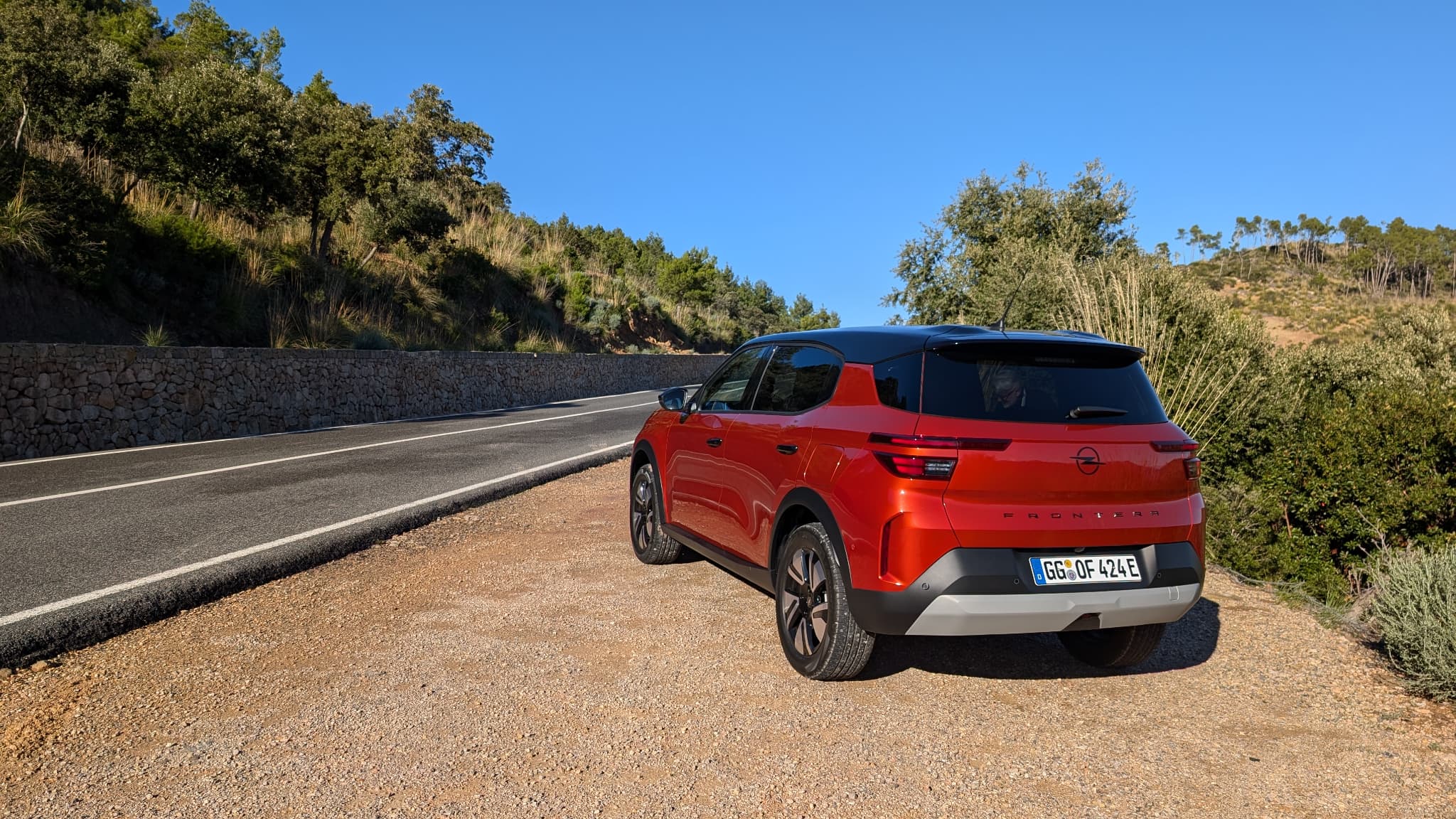This is a very important model for Opel. The German brand completes its range of SUVs, with its new Frontera, between the Mokka and the Grandland, with the function of replacing the Crossland in this intermediate format. A cousin of the Citroën C3 Aircross, from which it takes the “Smart Car” platform of the Stellantis group.
A versatile small SUV format at affordable prices
At 4.38 meters long, we are left with a relatively compact SUV, but one that aims to be versatile. And that above all represents the willingness to show aggressive prices, from 26,000 euros for hybrids and 29,000 euros for 100% electric ones (bonuses excluded).
A certain return to reason after a sharp rise in prices in recent years for most brands. Especially among these large generalist brands, such as Opel and Citroën, which are expected to offer new vehicles for all budgets. At Citroën, the hybrid C3 Aircross starts at 25,500 euros and the electric version starts at 23,300 euros.
Like its gallon cousin, this Frontera does not hide certain choices made to reduce costs. However, it is not a low-cost offer, a word that remains taboo in the automobile sector, even for the champion of the category, Dacia.
In fact, Opel insists on its will. “to get to the point” on this Frontier, speaking of “detoxification.” And, of course, have the client’s expectations clearly identified, which will remain to be verified. Any resemblance to Dacia’s latest slogan “essential but cool” would be purely coincidental.
A design close to the C3 Aircross
From the outside, the Frontera looks quite good, with front and rear faces featuring modern and successful lighting signatures. However, in profile and overall, it is difficult to hide the resemblance to its Citroën cousin, with visibly limited efforts to distinguish itself from it.
Despite this good impression from a design point of view, the wheels have a “white sheets” (available in the first equipment level in a “white style” package at 500 euros that also adds a white roof) or the presence of a classic antenna on the roof already reveal a certain inclination to reduce costs.
We can also mention the hood, which seemed very heavy to us, although the vehicle claims to have a fairly limited weight, less than 1.6 electric tons.
By the way, we can also welcome Opel’s effort to simplify the configuration of this Fronteta: two trim levels (Edition and GS), three engine options (electric and two micro-hybrids), two packs to add equipment, 6 different colors and only a few options. It is not surprising, because Citroën has followed the same path of simplification for the C3 and C3 Aircross duo.
A nice interior
The interior of the Frontera is also convincing at first glance. Obviously there is a lot of plastic, but the assembly is still well done and we have a lot of storage space, two USB C ports on the front, another two on the back accompanied by a 12V socket.
Enough to complete the trunk with a volume of 460 liters. We will simply regret the absence of a front trunk, or frunk, despite the numerous free spaces under the hood of the 100% electric versions.
In these tests, the microhybrid versions were in basic trim. “Edition” but it benefits from the techno pack at 1,200 euros with the 10-inch touch screen that is added to the counters, which are standard. The optional upholstery at 1,000 euros allows you to benefit from heated seats and steering wheel. Winter equipment that was not present in the 100% electric versions, although it was in the second and last GS trim level, but to which we must add a Comfort pack of 1,000 euros.
The seven-seater version, with a third row in the trunk and therefore quite a few additional seats, was not available for testing. An option at 700 euros that is offered in hybrid versions and in GS finish.
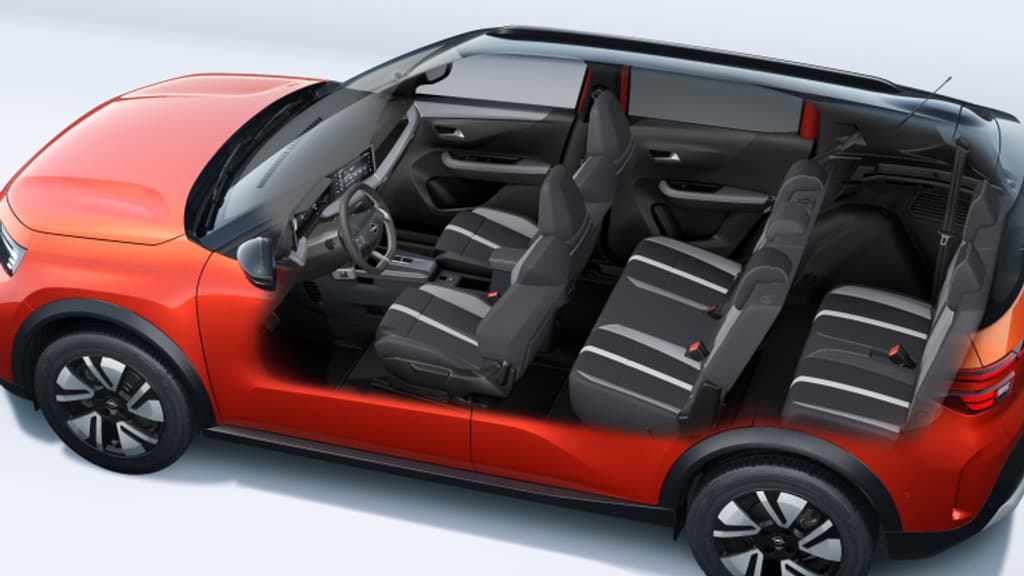
It is also a shame not to see what the basic finish offers without the 1,200 euro Techno pack. The touch screen is then replaced by a smartphone holder and Bluetooth connection. All this completed by a magnetic surface that allows you to hang reminders or a photo. A choice that could be really relevant even in GS finish. Therefore, the same criticisms as Dacia, which does not offer its “Media Control” in the first level of finish of its models.
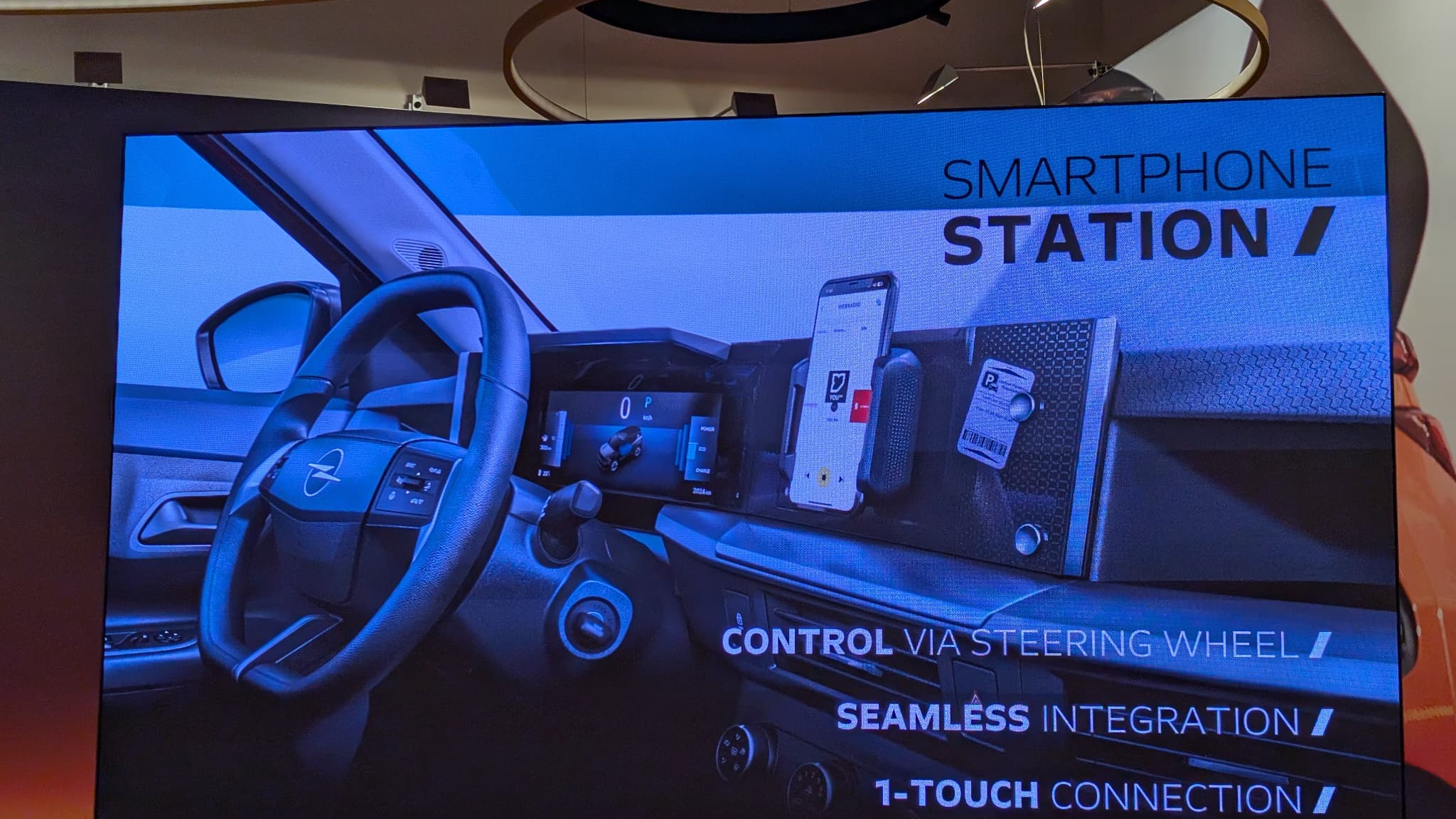
The 10-inch touchscreen provides the essentials, with integrated navigation and the wireless Android Auto/Carplay duo. Next we find physical climate controls, a good point.
At the level of the storage compartment there is a space to charge a phone in induction and just in front a space surrounded by an elastic fabric band. Opel presents it as a place to put a tablet.
Why not? But the rather low position of this screen does not guarantee optimal visual comfort for the passenger. The driver might also be a little distracted, but at least he won’t be hampered in his interactions, particularly when shifting from forward to reverse, with the small switch located on the center console.
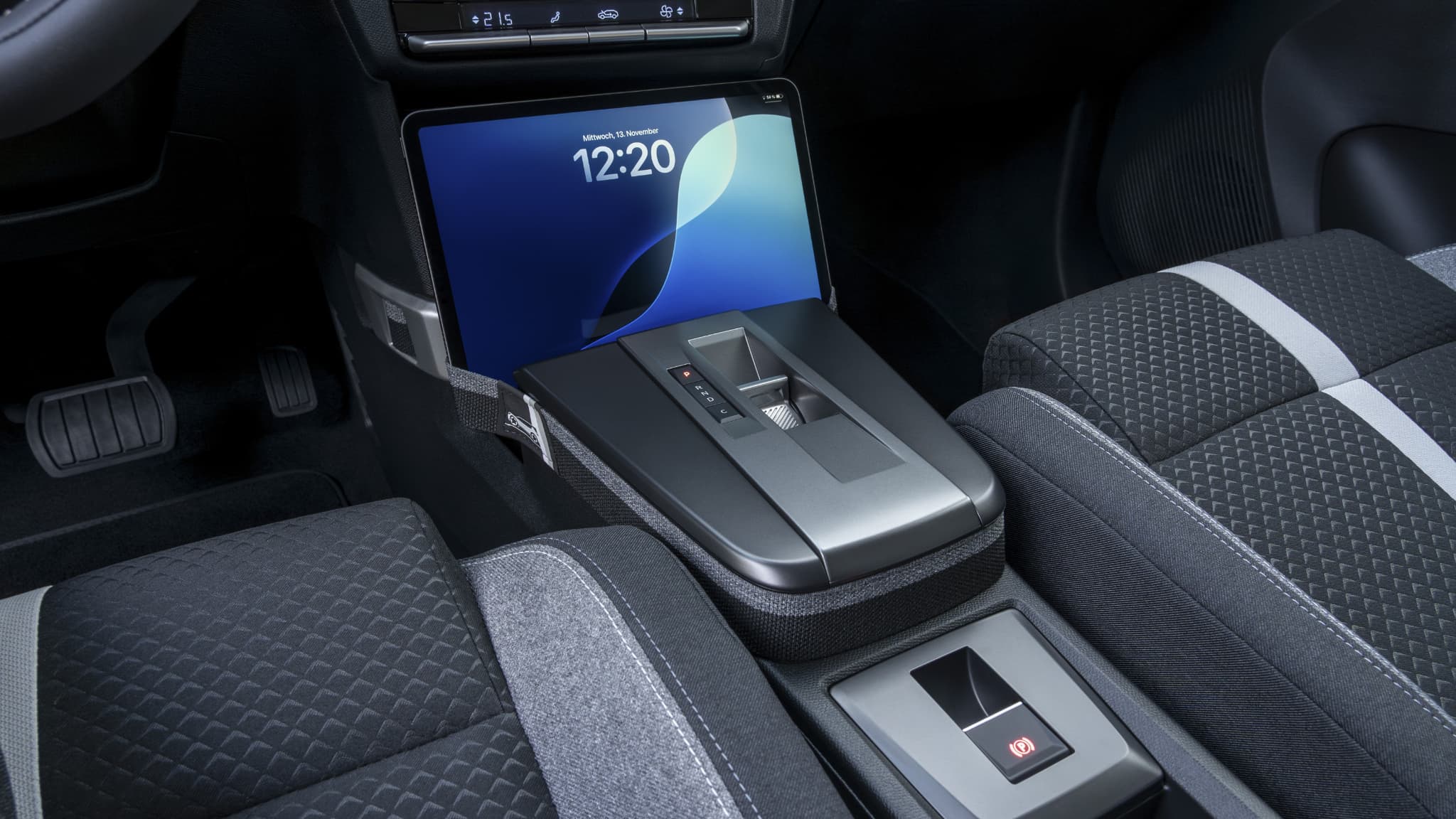
Ignition key and other low-cost details
In new and modern vehicles we are very surprised to find an old acquaintance: the ignition key. Once again, a step back justified by this desire to reduce costs. And why not? It is surprising not to offer a key with hands-free access and from the second equipment level or as an option. And it is always quite strange, as in a Dacia Spring or a Citroën C3, to turn a key to start a 100% electric car.
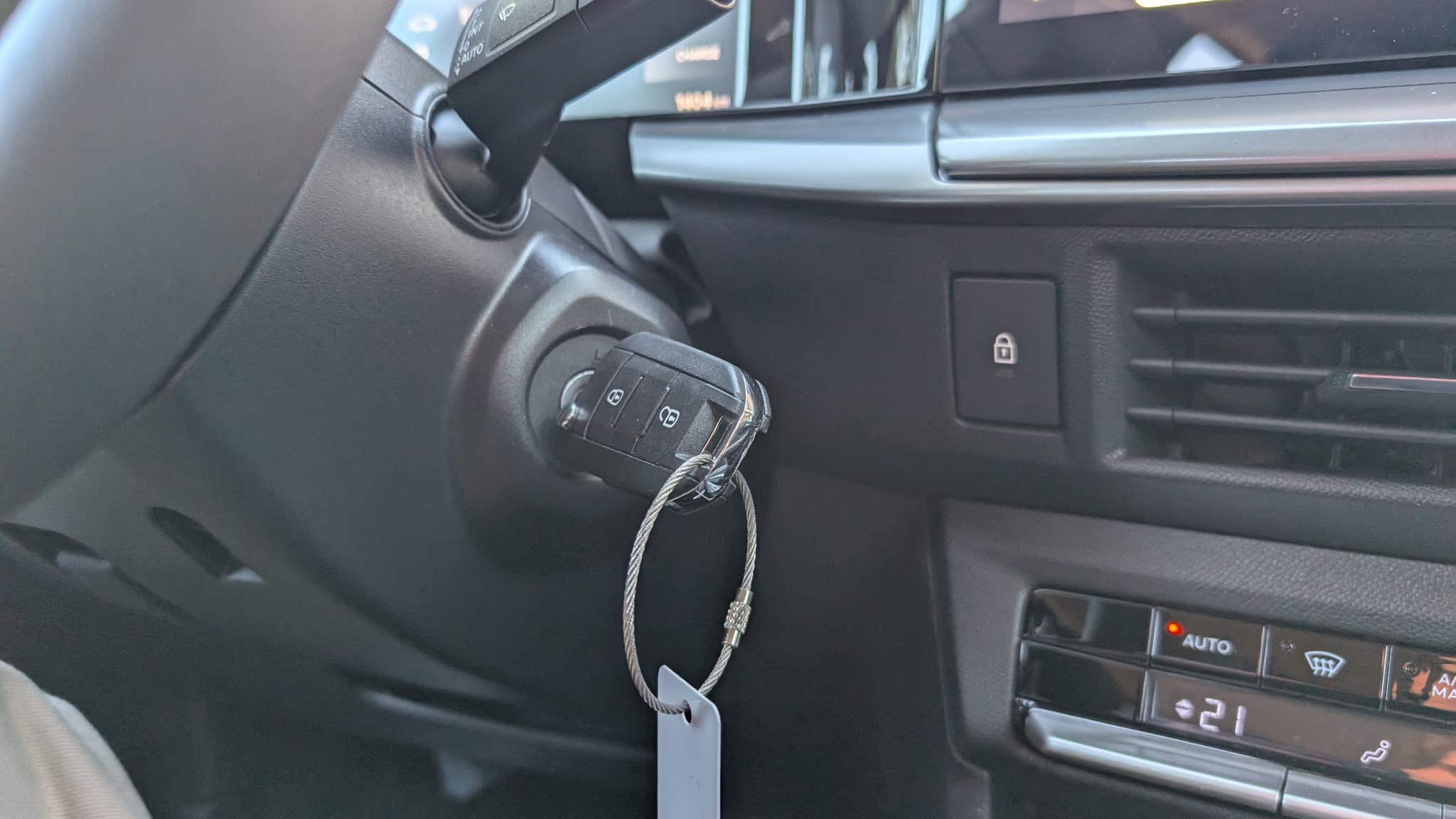
In other economic details we certainly find an electric window, but it is only sequential when opened. You have to hold the button down to close it. So that? This makes it possible to dispense with the mandatory anti-crush sensor to offer automatic closing of the window.
It is also surprising to see a visible and unaesthetic insulating foam under the steering wheel. It is certainly not a really visible part inside, but it is still seen quite easily when looking for, for example, the hatch to open the hood.
Lastly, but this would a priori be a feature of the latest Stellantis vehicles rather than a low-cost detail: the “auto hold” function is not offered. You must remain depressed on the brake pedal when you are stopped, for example at a red light, while this function allows you to activate the electric parking brake. Once again, a detail of no great importance, but one that can be annoying on a daily basis.
An electric version with quite limited autonomy
The 100% electric version is quite convincing on the road. The power of 113 horsepower is still very adequate for this family model. Also see how it will look in a vehicle packed with five people and luggage. The essential is there with a reassuring behavior and good acoustic insulation.
It is above all the autonomy that may seem limited, with a 44 kWh battery and 305 km of autonomy announced according to the WLTP standard.
Above all, a point that we hope will be corrected quickly, the vehicle did not display its electrical consumption during and at the end of the trip. Therefore, it must be deduced through simple (but tedious) calculations, comparing the autonomy at departure and arrival.
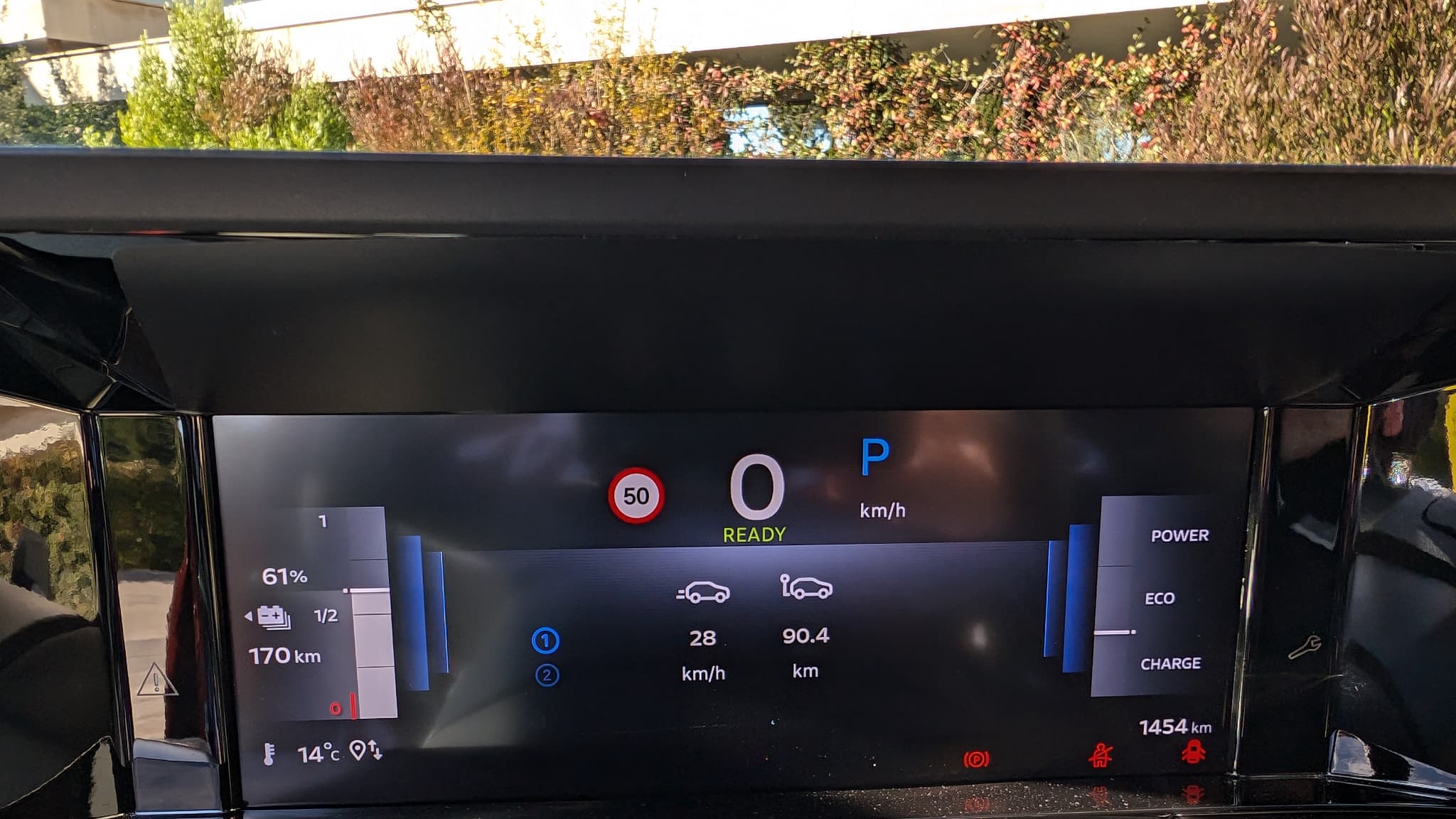
Which we did, with a not-so-great track record without being disappointing. On a route that combines mountain roads, city roads and some highways, we consume 18.5 kWh every 100 km.
Therefore, this would give 236 km of autonomy. “real” and certainly well below 200 km on the road. Enough to not be as versatile, but it can still correspond to certain uses.
If we add a very basic route planner to the electric version, this electric Frontera does not require long, emissions-free trips. Too bad about the 100 kW fast charging, which allows you to anticipate charging breaks of only about 30 minutes.
To see which is the version with a “large battery” that will offer close to 400 km of autonomy.
In hybrid, forgetting about the Puretech
We were also able to quickly test the 136-horsepower hybrid version, which has the good taste to show its consumption: 5.3 liters per 100 over 44 km, mainly on highways.
A powertrain that combines a 1.2 three-cylinder gasoline engine with a small 48 V electric motor, coupled to a 6-speed automatic transmission.
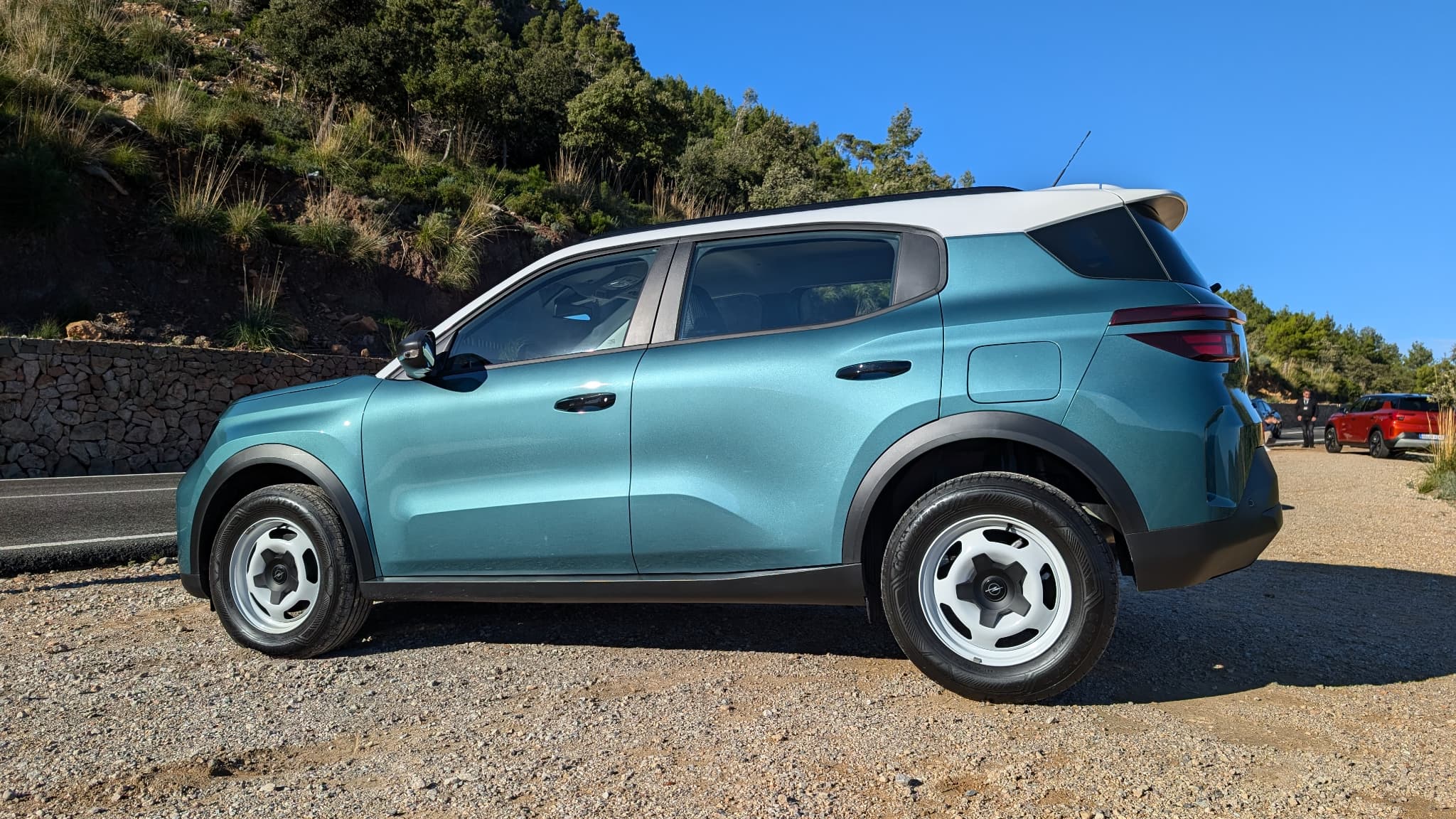
A nice engine, with a vehicle a little lighter than the electric one (170 kg difference), but which will also have to suffer the repercussions of the Puretech engine scandal.
Although it has officially been made more reliable with a metal belt, the magnitude of the defects and lingering fears about this new version could still scare off some buyers.
In conclusion, a risky reduction?
This Opel Frontera is a quite attractive proposal, with this versatility, especially in hybrid that will not have the problem of the electric range being too limited.
It remains to be seen how Opel’s target customers will accept this decline in the market and an offer close to that of Citroën in the C3 and C3 Aircross, which may be reminiscent of Dacia’s strategy.
Enough to also win over new customers, who are looking for the best quality-price ratio and are willing to give up certain equipment.
Source: BFM TV


